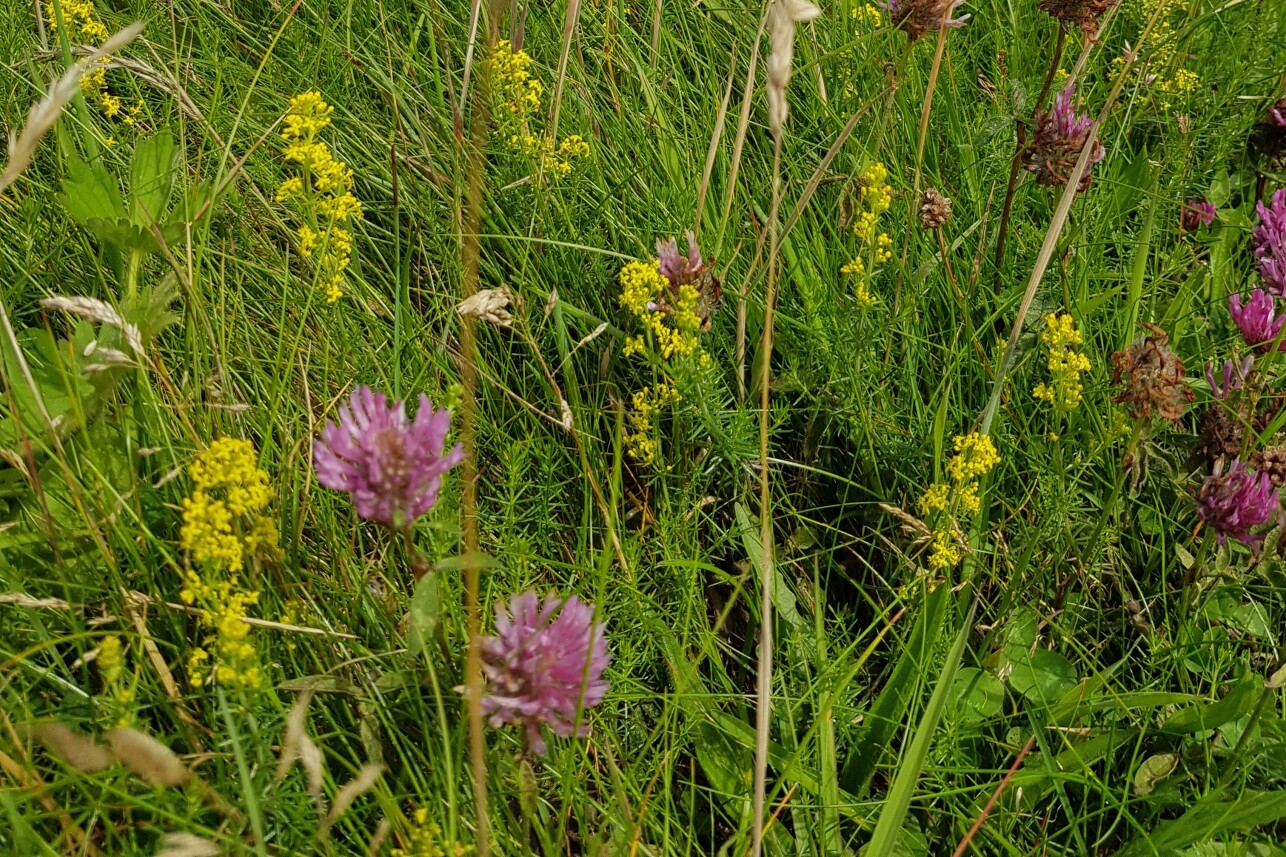The real 'luck' of clovers
Ahead of St. Patrick's Day, we looked into the real benefits of clovers and how they can contribute to preserving the biodiversity and soil health of vital wild places.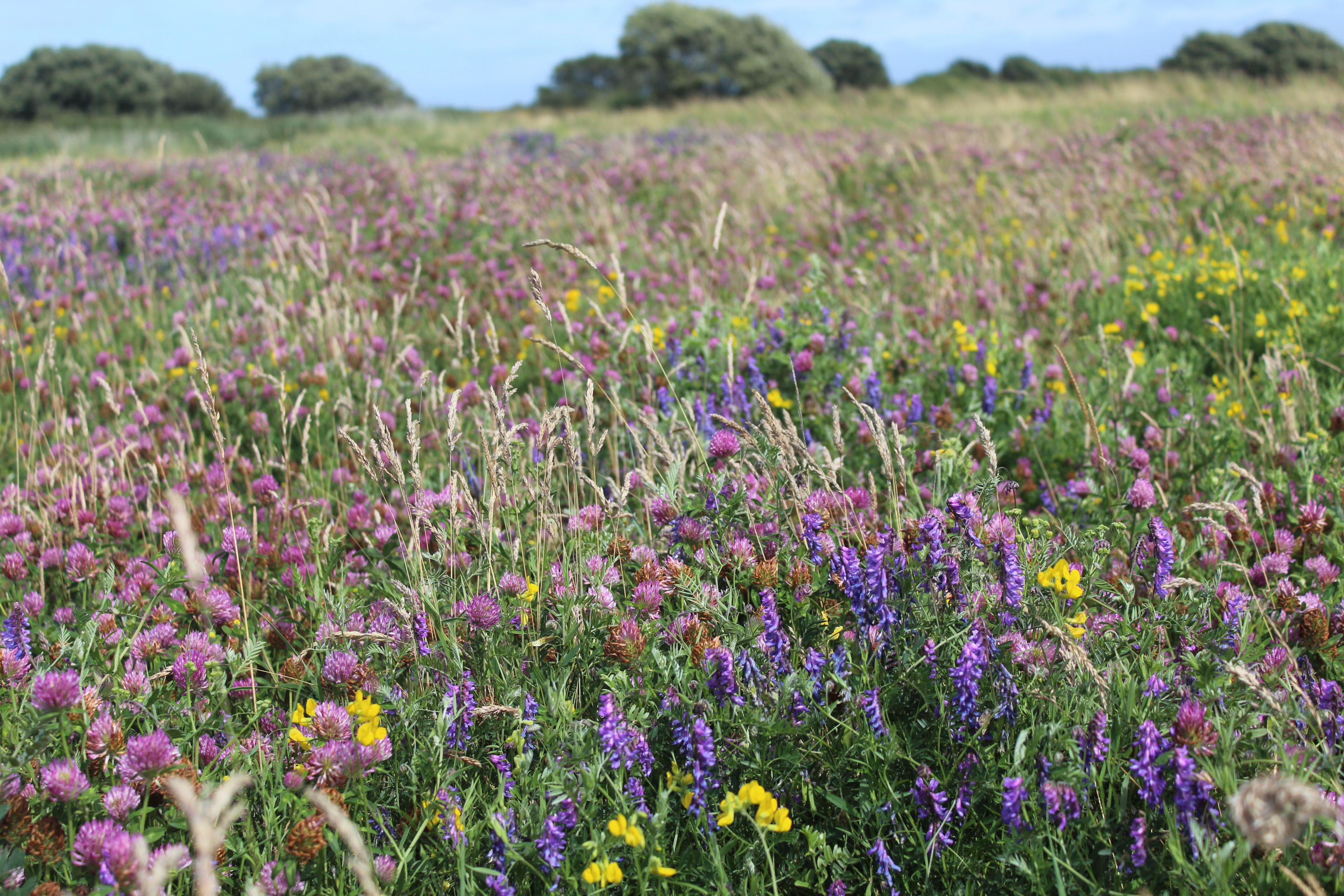
^ Red clover in a large wildflower meadow, © Bumblebee Conservation Trust
There are many different theories about why clovers are considered lucky. There are several popular tales about how St. Patrick used the three-leaf shamrock to explain the trinity to the Irish people. Some legends say that the four leaves stand for faith, hope, love, and luck - others say that they grant the power to see fairies. One even suggests that Eve plucked the four-leafed clover from the Garden of Eden as she left, bringing its luck into the mortal world. But one thing we do know is that when we give nature the freedom to thrive, plants such as clover can have incredible benefits to the regeneration of vital wild places.
Also known as trefoil, clover is a member of the genus Trifolium which consists of almost 300 different species of flowering plants. Originating in Europe, species of clover can now be found all across the world ranging from temperate mountainous regions to humid sub-tropical climates. In the UK, there are around 30 native and naturalised clover species that have been identified. These low growing plants are actually related to beans, peanuts and lentils as they are part of the legume family, which explains one of their superpowers!
^ Red clover flowers, © Bumblebee Conservation Trust
Clover as a nitrogen fixer
Within the root system of many legumes, such as clover, symbiotic bacteria called rhizobia can be found. These bacteria are present in the soil and once they have infected their host plants root system, root nodules are formed. It is within these root nodules that nitrogen fixing occurs. Taking the nitrogen gas (N2) from the atmosphere and air pockets within the soil, the bacterium converts this into stable organic compounds. Once this transformation is complete, the nitrogen is then transferred from the root nodules through the rest of the plant and is used for growth. After the clover dies off, the root nodules break down through decomposition and release the rhizobia bacteria back into the soil until they can infect a new plant host.
Nitrogen is one of the most commonly deficient nutrients in many soils around the world and therefore, artificial fertilisers to correct this have become increasingly in demand. As nitrogen is essential for photosynthesis, this deficiency can have a severe impact on the health of the environment and subsequent biodiversity. Without adequate nutrients, plants can fail at producing fruit and flowers therefore curbing reproduction as well as eventually leading to plants dying and disappearing from the habitat. Therefore, introducing and encouraging clover growth in areas where soil health is poor is a great natural solution as opposed to using an artificially produced chemical fertiliser which can cause other unnecessary and harmful issues for wild places.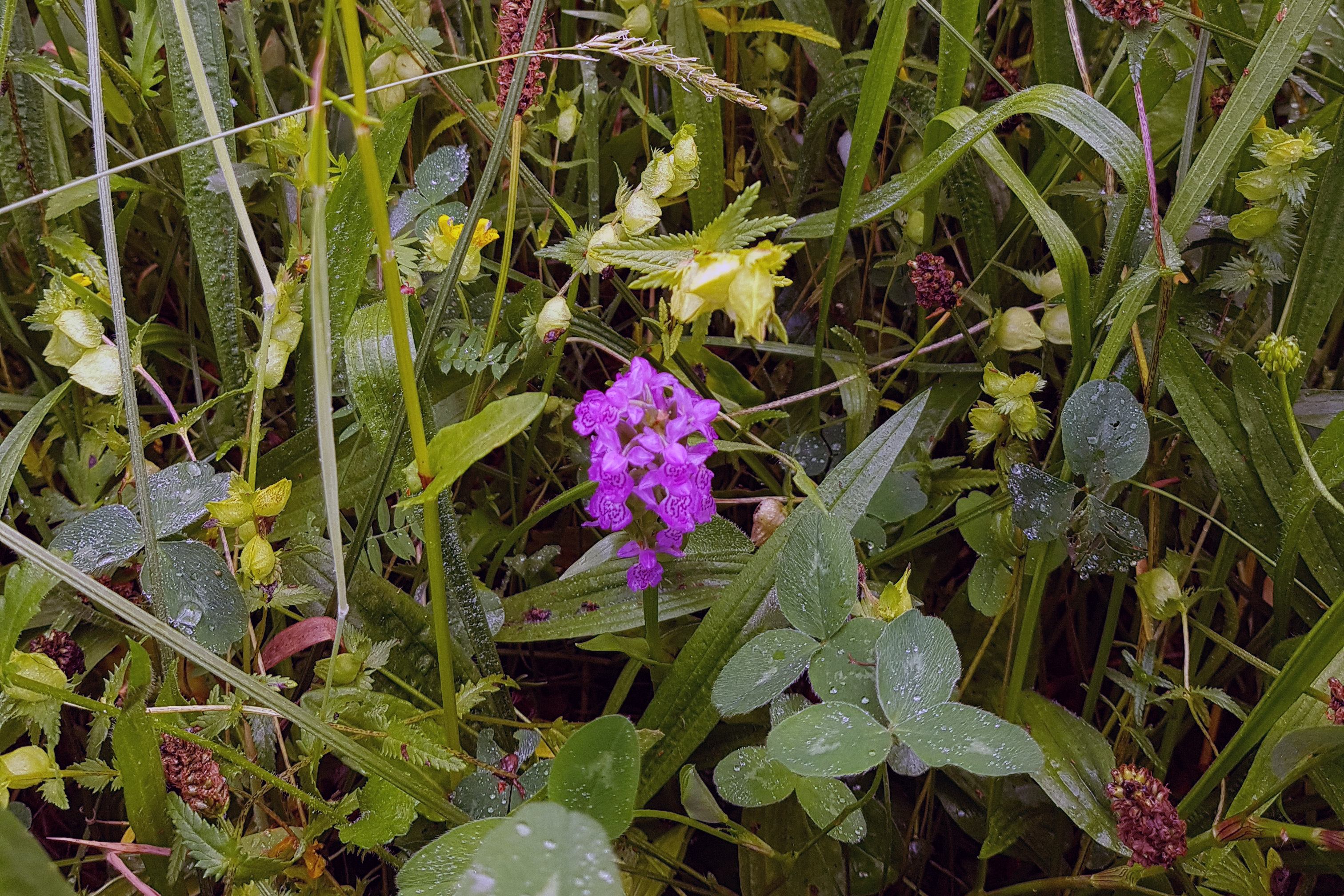
^ Clover leaves surrounding a purple wild orchid flower amongst other wildflower and grasses, © Flo Macdonald
Clover as a pollinator's best friend
Clover is a very popular plant for many pollinators due to the easy to reach nectar found within the flowers. The red clovers flowers are a particular favourite of the common carder bee, red-tailed bumblebee and many other long-tongued bumblebees. It is also a very popular plant with domesticated honeybees, as is white clover, resulting in a sweet, floral flavoured clover honey. Scientists have linked the recent drastic decline in bee populations to the eradication of clover, amongst other common ‘weeds’, and the increase in monoculture agriculture practices. The nectar of clover also feeds a number of native butterflies, moths, and other bugs making it an important species for encouraging biodiversity in wild places.
But it’s not just the nectar that benefits these beasties – patches of densely packed clover also provide essential shelter to these pollinators as well as other wildlife and parasites, fostering a truly diverse ecosystem. The flower heads of the plant are often consumed by wildlife such as rabbits, foxes, deer and even some bird species. Earthworms in particular thrive in clover pastures due to the water captured and held within the soil, creating the perfectly moist habitat for them. This in turn helps boost the soil health as earthworms are incredibly important organisms, breaking down dead organic matter and releasing the nutrients into the surrounding soil.
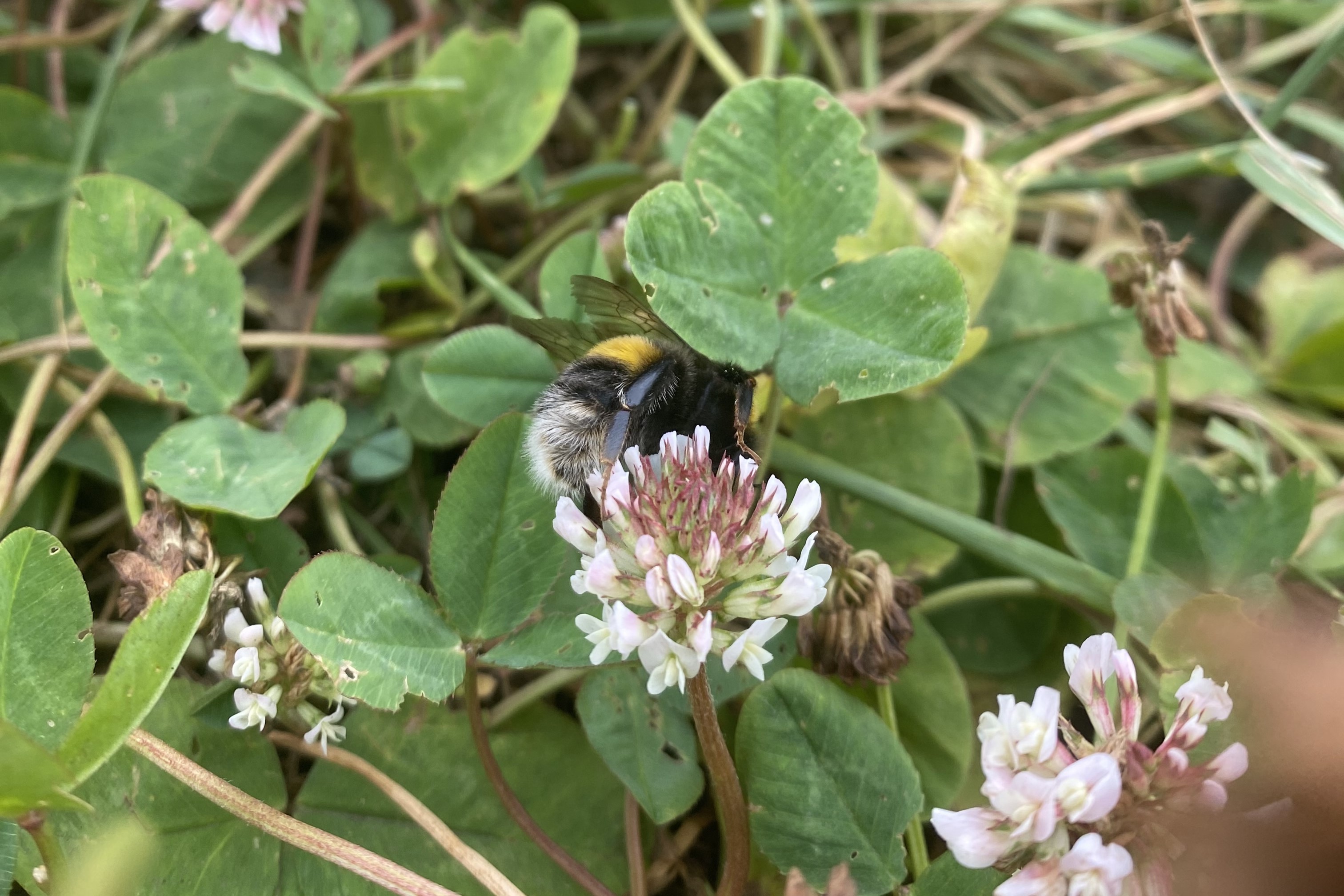
^ Bumblebee on white clover flower, © Jade Oliver, supplied by the Bumblebee Conservation Trust
Clover as soil strengthener
Across England and Wales, almost 4 million hectares of soil are at risk of compaction and over 2 million hectares are at risk of erosion. However, the two most common species of planted clover can help prevent this. The shallow roots of the white clover can help break up compacted soil to improve the drainage. This can lessen the impact of heavy rainfall saturating the soil causing root rot and plant death. Red clover on the other hand has a much deeper root system. This can help improve the soil structure by providing an anchor for soil particles, preventing soil erosion and nutrients being washed away during heavy rainfall. These deep roots can also help draw these vital nutrients and minerals deeper into the soil, improving the overall soil health.
Since clover is a quick and abundantly growing plant that can grow well in a variety of soil types, this makes it the perfect species to aid in the battle against soil erosion and degradation in the UK. Clover can also help suppress other weeds from growing as it often out-competes them, reducing the need to use harmful artificial chemical herbicides. Being able to grow in a number of climates means it is able to withstand harsh winters, wet autumns and springs, and hot summers, all weather that we are seeing more of with the increase of global warming.
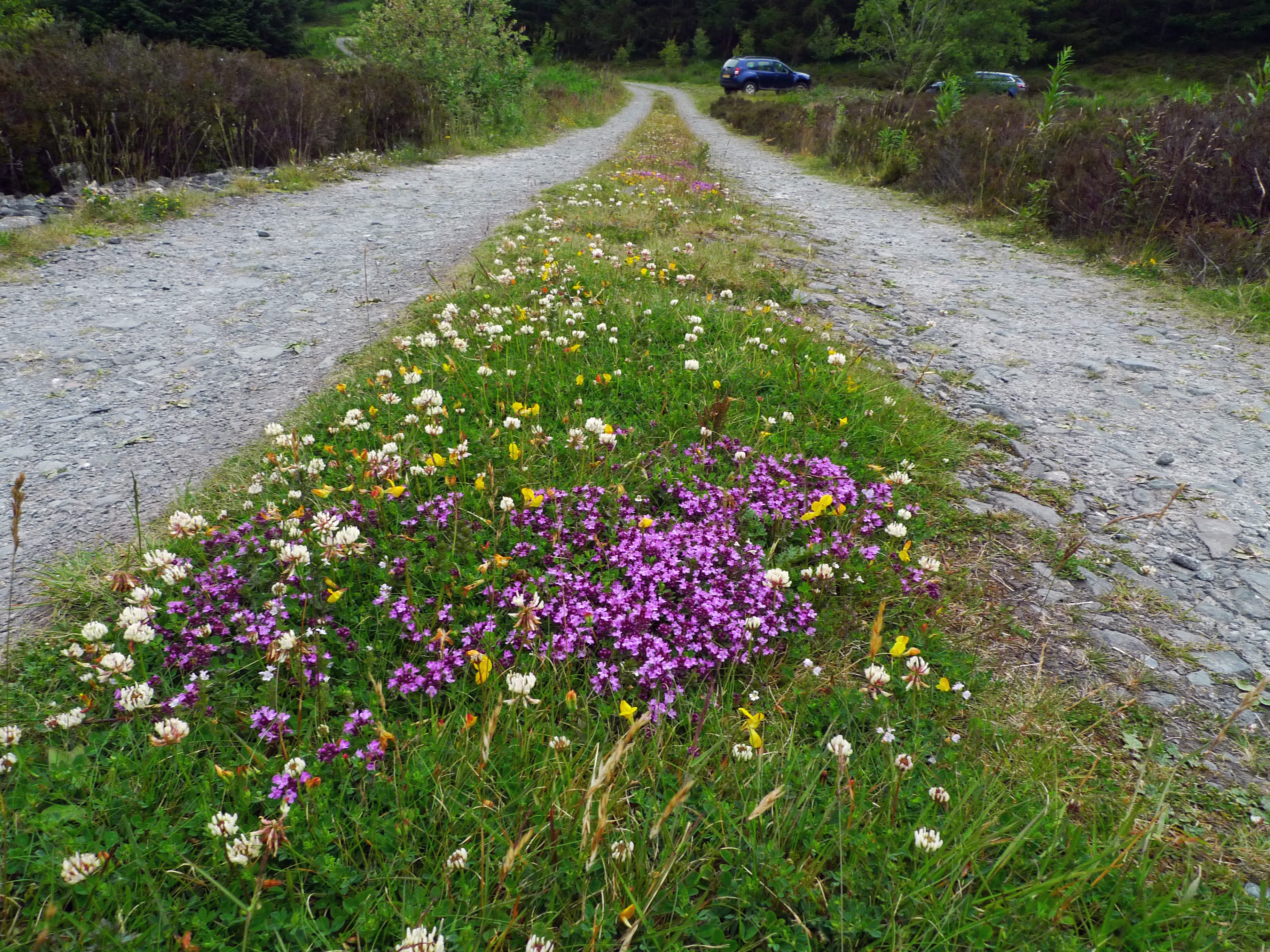 ^ White clover and other wild flowers reclaiming a strip of grass in the middle of a road at Glenlude
^ White clover and other wild flowers reclaiming a strip of grass in the middle of a road at Glenlude
Whether you believe in the luck of the four-leaf clover or not, one thing is for certain – the Trifolium genus of plants is something truly magnificent. Such a small organism with many incredible benefits to improve the health, resilience, and biodiversity of our wild places.
One way in which you can help is by leaving a small area of your own garden to go ‘wild’ by allowing ‘weeds’ such as clover to reclaim the space. These areas can provide a much needed ‘green corridor’ for wildlife and pollinators, giving nature the freedom to thrive alongside our growing communities.
- Thank you to the Bumblebee Conservation Trust for sharing some photographs for this article.
